Family reunion: How habitat restoration is returning salmon to Katzie territory
“It’s in our history, back to the time of Creation, that a Katzie person married a Sockeye person and they went away together, out to the ocean. But every year they come home to Katzie, and so we refer to the salmon — not just sockeye but all species — as family. They’re Katzie members.”
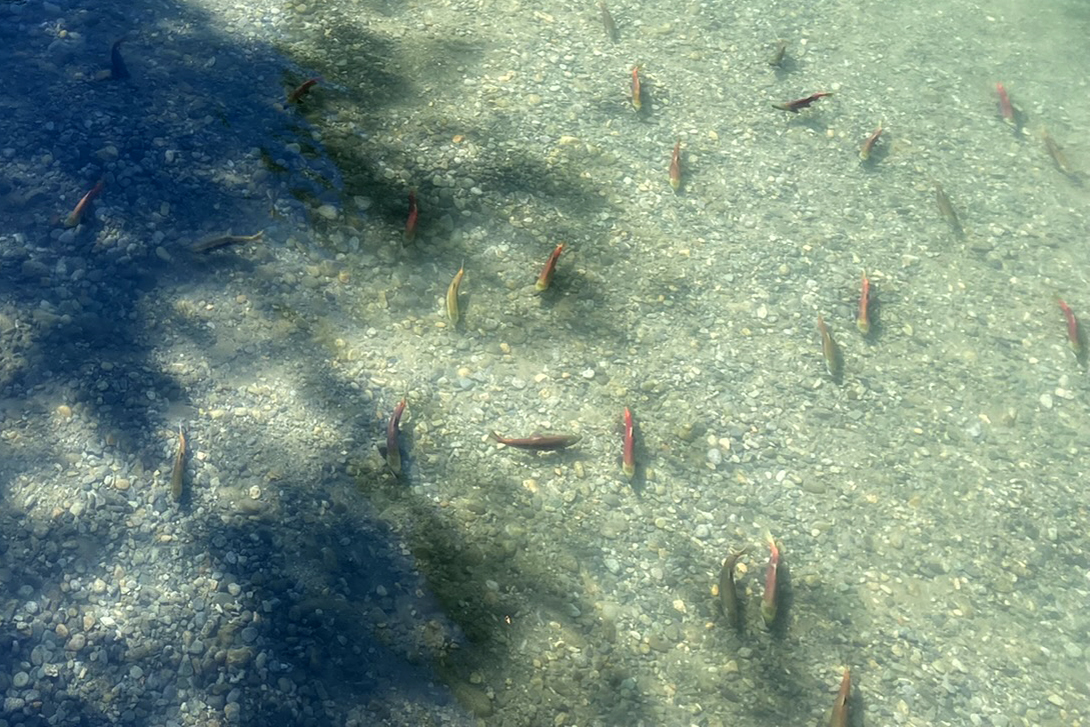 Sockeye salmon spawning in Corbold Creek, an Upper Pitt River tributary in B.C.’s Lower Mainland © Joshua Ostroff / WWF-Canada
Sockeye salmon spawning in Corbold Creek, an Upper Pitt River tributary in B.C.’s Lower Mainland © Joshua Ostroff / WWF-Canada
Rick Bailey, a Katzie First Nation band councillor whose portfolio includes fish and wildlife, is standing on a wooden dock at the edge of the aquamarine Pitt Lake. Surrounded by the towering Coast Mountains, this is one of the world’s largest tidal lakes — just 50 kilometres northeast of downtown Vancouver. Red ochre pictographs drawn by Katzie ancestors can still be seen on the lake’s western cliff face and recent environmental assessments upriver revealed more archaeological sites, including 50 ancient pit houses.
“At times I’ve actually gotten emotional about it,” Bailey says “That’s why this is so high-priority for us, to fix all the spawning streams and creeks in the Upper Pitt — so our salmon family will have a good place to come home to, so the runs will rebuild again and provide nourishment for Katzie people.”
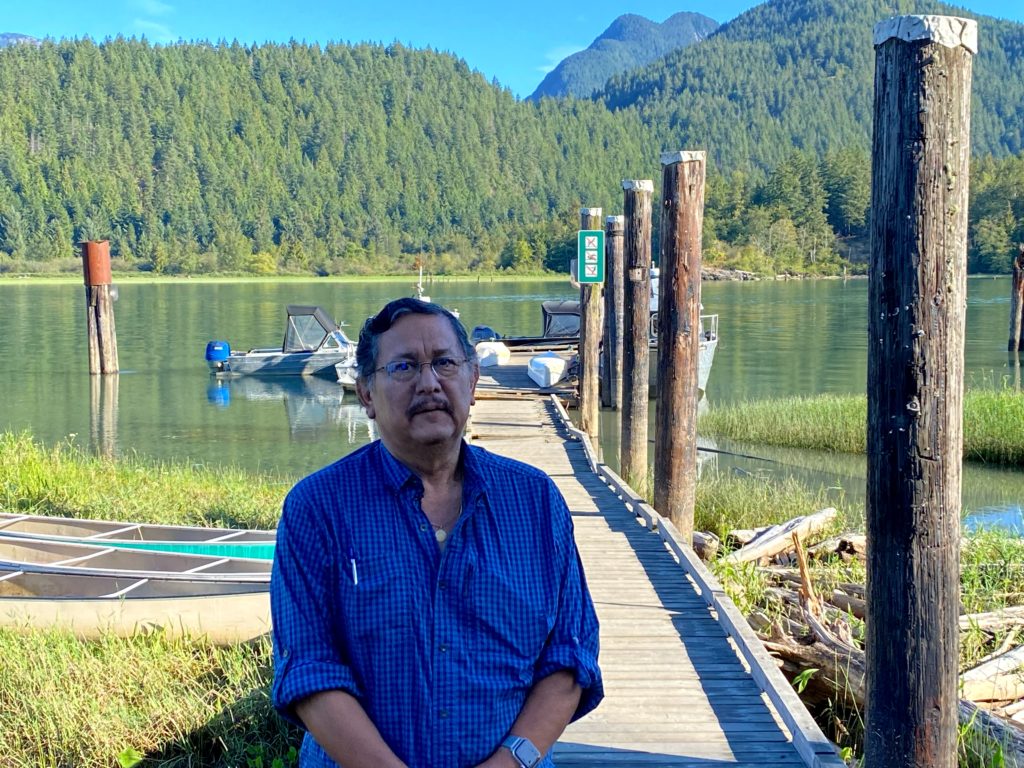
Across the lake lies the Upper Pitt River, a crucial spawning ground and rare host to all five salmon species, while the Lower Pitt River leaving the lake’s southern end feeds into the mighty Fraser River en route to the Pacific Ocean. But the salmon populations that traverse this route are near collapse.
“We used to fish three days a week, 52 weeks a year, and now we get to fish just three or four weeks in August because the salmon, they’re just not coming back,” Bailey says. “I’ve had Elders call and want to go harvest some Pitt sockeye and last year I made a decision that wasn’t an option because the numbers were so low. And we can’t point the finger at any one thing.”
Wild pacific salmon face an array of threats ranging from industrial pressures like overfishing, pollution and deforestation to climate change impacts like warming oceans, heat domes and atmospheric rivers. The result has been untenably hot watersheds and widespread flooding and landslides, especially in heavily logged areas, which are degrading, fragmenting and destroying spawning and rearing habitats.
Salmon is a keystone species that also sustains other wildlife populations, from bears to killer whales, so there are also ecosystem-wide repercussions to this decline.
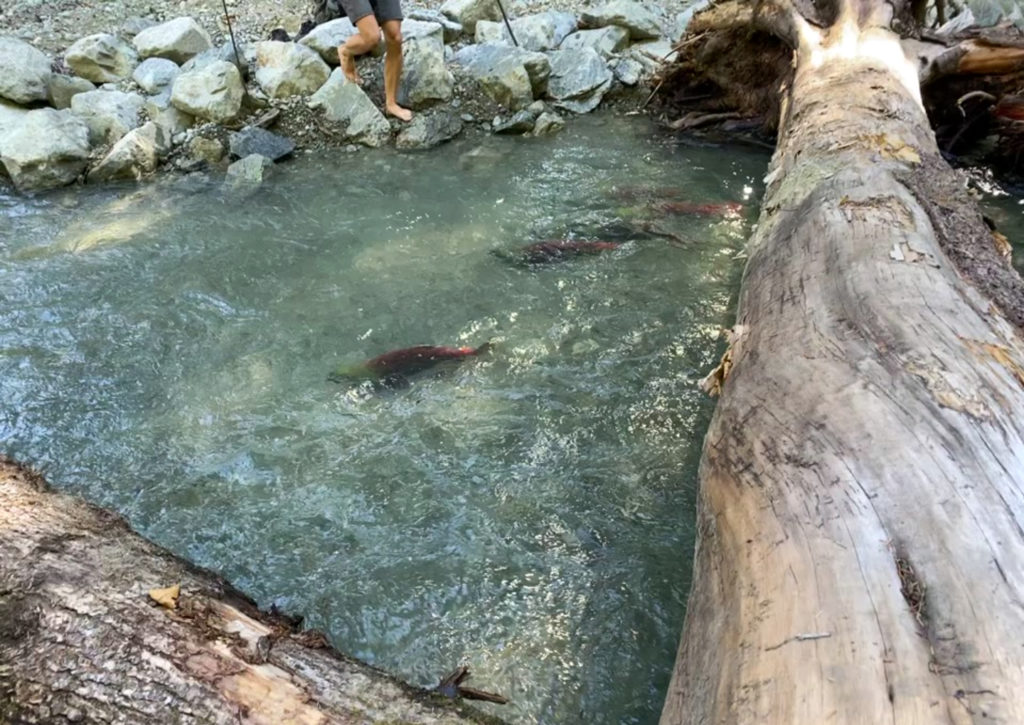
Born in gravel spawning beds in creeks and streams, salmon emerge as fry to feed until they grow large enough to swim out to the ocean, ultimately returning upriver to their birthplace to reproduce and die. This four-year lifecycle causes natural population peaks and valleys, and 2022 should be a dominant year for sockeye.
The Fraser River run was initially forecast at 9.8 million before being shockingly revised down to 5.5 million once the season began (albeit less shocking than 2020, when only 288,000 sockeye returned, breaking the previous year’s record low of 493,000).
The Upper Pitt Restoration Project
These dramatic declines are why salmon habitat restoration is so important, and why WWF-Canada is funding a long-term, Katzie-led project throughout the Upper Pitt watershed to bring them back.
“We got a call from a friend who lives up there that there was a landslide on Blue Creek, a Chinook spawning creek,” says Bailey, explaining the Upper Pitt Restoration Project’s 2018 origins. A collapsed forestry culvert had triggered the landslide, filling much of the creek with rocky debris and sediment.
Bailey contacted Ian Hamilton, a biologist from the Lower Fraser Fisheries Alliance (LFFA), who reached out to us.
The resounding success of that initial 2019 fieldwork has since grown into a Chief and Council-directed 10-year plan with additional funding and expertise from the Department of Fisheries and Oceans, Healthy Waters Initiative, Pacific Salmon Foundation, Makeway Foundation, W.C. Kitchen Foundation and others.
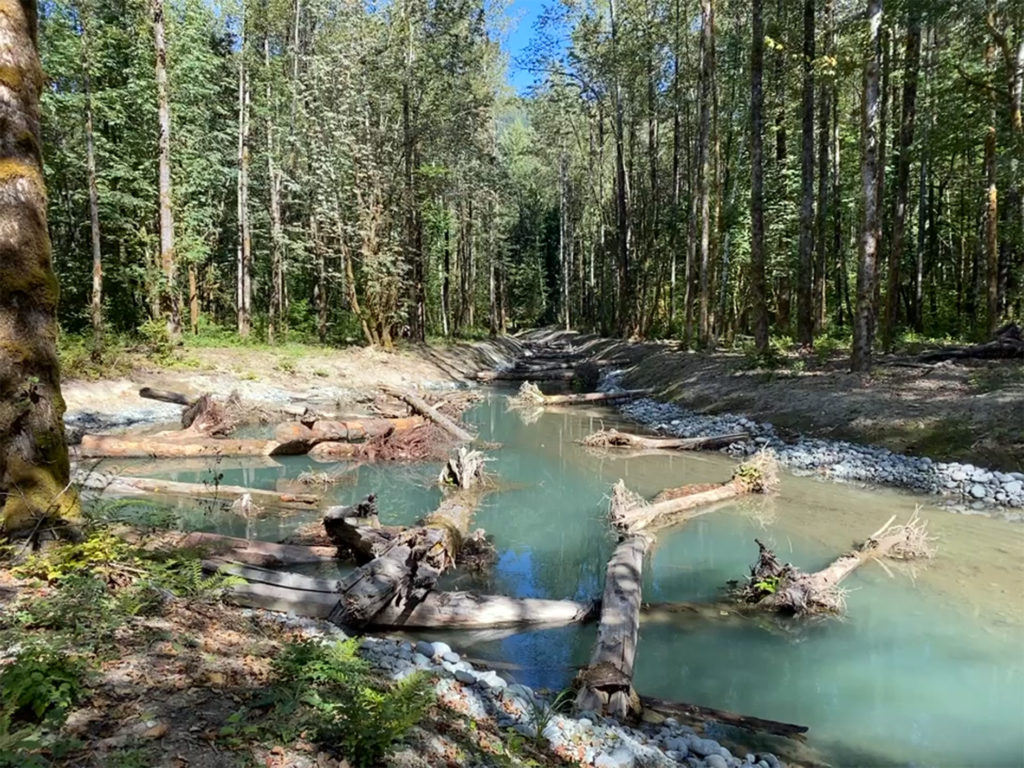
The past two field seasons have focused on restoring Upper Pitt River habitat in preparation for this year’s peak sockeye run — or more specifically, creating brand-new habitat.
“In March of 2021, this whole area was forest,” explains Hamilton, pointing towards the Sθqəy channel, a turquoise waterway pockmarked by bright-red sockeye slowly swimming against the current.
“Everything you see here was built and installed from the end of winter last year to fruition and completion now. None of this existed.”
At the top of this new channel is Corbold Creek, a natural spawning creek restored in 2020 to increase its glacier-fed flows. Then a two-person team using heavy machinery dug a 700-metre channel down to groundwater, removed silt and debris and used the logs to create coverage from predators.
Katzie members and LFFA staff planted native trees and shrubs to stabilize the banks and provide thermal shade protection to keep the water temperature down.
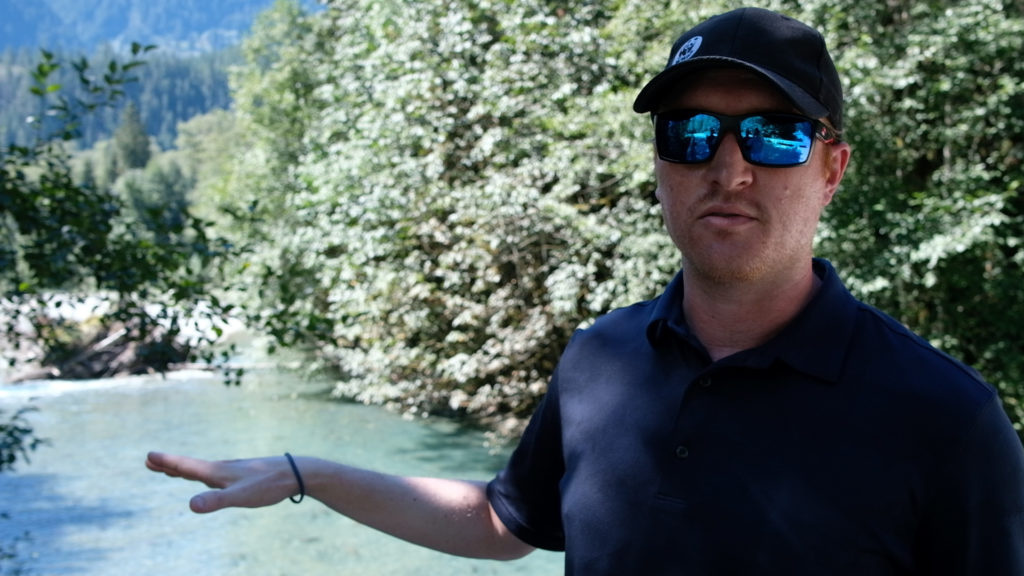
They split the creek outflow to flood the new channel in August. By early September, sockeye were already using it. Once winter approaches, the channel will be flooded with coho.
“One of the limiting factors here is there’s not enough habitat for the fish because every time you build something, you get fish in it,” Hamilton says. “So, it’s kind of like Field of Dreams, if you build it, they will come. Up here, you just add water.”
The project’s next major site is Red Slough, an intertidal waterway cut off from the Pitt River by forest service roads. Restoring it back to suitable salmon habitat by reintroducing historic flows will increase biodiversity and also support increased carbon sequestration to help fight climate change.
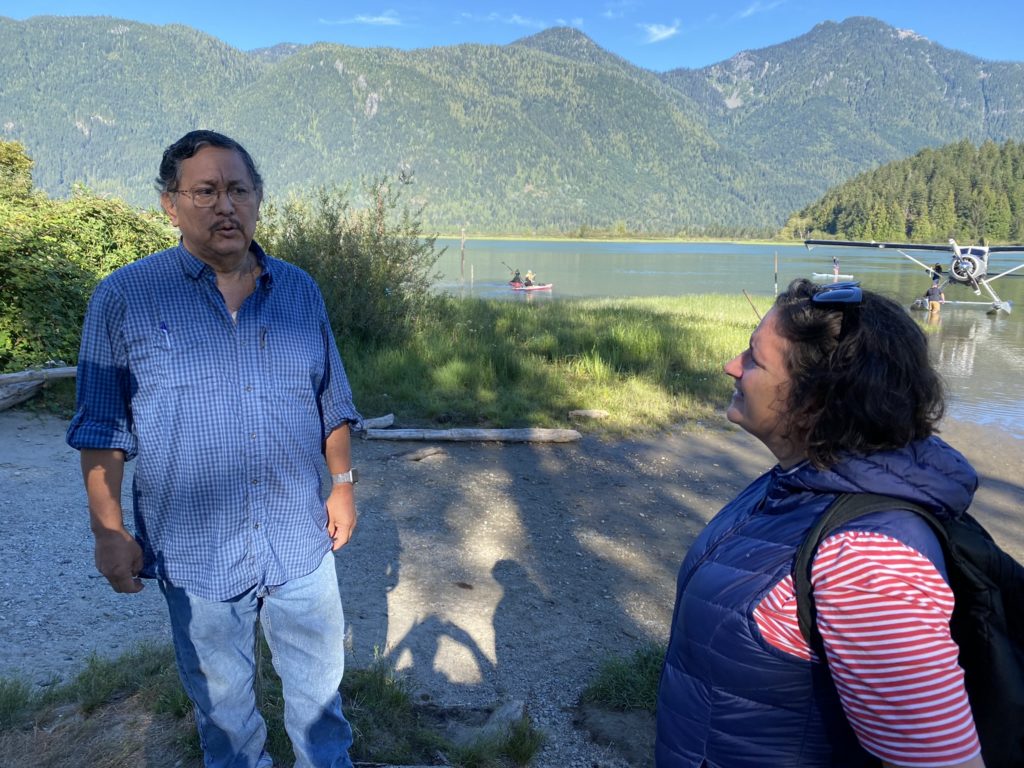
“We only took what we needed, throughout history, and there was always enough. But it’s not just us here anymore,” says Bailey.
“When I say, ‘our fish,’ I mean mine and yours because you’re here, and you’re not going anywhere. We’re here, we’re not going anywhere. And we all want some fish.”
“We’ve got 10 years of work scheduled,” he adds, “but I think it’s forever. There will always be someone up there making sure everything is flowing right. That’s the way we have looked after it since time immemorial — but it’s a different world today, and we have to work together to keep it sustainable.”
This article originally appeared in our monthly newsletter, Fieldnotes. Click here to subscribe to future issues.

